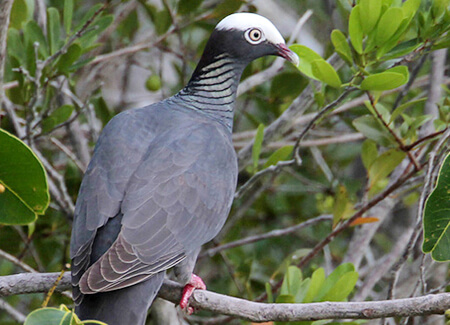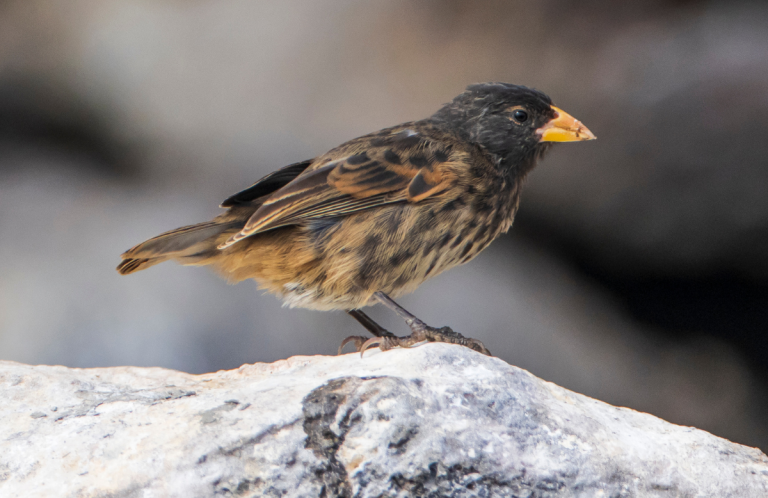 Don't let the common “city pigeon” put you off pigeons; this one—the White-crowned Pigeon—is a fascinating bird. It's about the size of the common urban pigeon, but there the similarities end. The White-crowned Pigeon's most distinctive feature is its white-topped head, which is bright white in males and grayish white in females and juveniles.
Don't let the common “city pigeon” put you off pigeons; this one—the White-crowned Pigeon—is a fascinating bird. It's about the size of the common urban pigeon, but there the similarities end. The White-crowned Pigeon's most distinctive feature is its white-topped head, which is bright white in males and grayish white in females and juveniles.
You could call them “fruit commuters.” The species primarily eats berries, figs, and other fruits, routinely flying from mangroves on their nesting islands to hardwood forests on the adjacent mainland, where they seek out fruiting trees.
Flying the Fruit Commute
The White-crowned Pigeon is a strong flier, regularly making long trips over water between nesting and feeding locales. Feeding areas often feature poisonwood (Metopium toxiferum), a tree related to poison ivy that is extremely toxic to most animals. Poisonwood fruits are readily eaten by the White-crowned Pigeon with no ill effects. The birds occasionally eats insects and small snails.
Foraging in the treetops in small groups, White-crowned Pigeons rarely descend to the ground to feed. They climb about in trees with unexpected agility, even hanging upside down and scrambling in the tops of trees in their search for food.
Sign up for ABC's eNews to learn how you can help protect birds
Making Milk
White-crowned Pigeons prefer small islands for nesting, in part to avoid predation by raccoons. The birds typically breed between May and September, although this time window varies depending on the availability of food and habitat. When food is abundant, the birds may breed as many as four times in one year.
Breeding in colonies within mangroves, both male and female build a loose platform nest of twigs. After the female lays one or two glossy white eggs, the male incubates during the day while the female takes the night shift. Both parents feed the young a diet of “crop milk,” a fat and protein-rich secretion, for several weeks.
This species is very skittish and has been known to abandon its nest in response to human encroachment.

White-crowned Pigeon, Greg Lavaty
Conservation of White-crowned Pigeon
The White-crowned Pigeon is a popular game species. Although protected in Florida, it is still threatened by overhunting on many Caribbean islands. Habitat loss, collisions with man-made objects, and pesticide use are also contributing to an ongoing population decline and led to the species' inclusion on the 2014 Watch List.
Along with birds such as the Wood Stork and Snail Kite, the White-crowned Pigeon is a high priority species for the Atlantic Coast Joint Venture (ACJV), a partnership of 17 states and commonwealths from Maine south to Puerto Rico, as well as federal and regional habitat conservation agencies and organizations (including American Bird Conservancy). The ACJV works to facilitate a partnership focused on habitat conservation for native birds in the Atlantic Flyway of the United States.
Conservation measures that benefit the White-crowned Pigeon include preservation of the small offshore islands where the birds breed.
Preventing a Pigeon's Demise
Ensuring a sustainable level of hunting is important to prevent the White-crowned Pigeon from meeting the fate of the Passenger Pigeon. In the Bahamas, for example, measures to reduce hunting pressure have been in place since 1987; they include a limit on the number of pigeons that can be shot and a shift in the hunting season to avoid the shooting of breeding birds.
Donate to support ABC's conservation mission!



















































